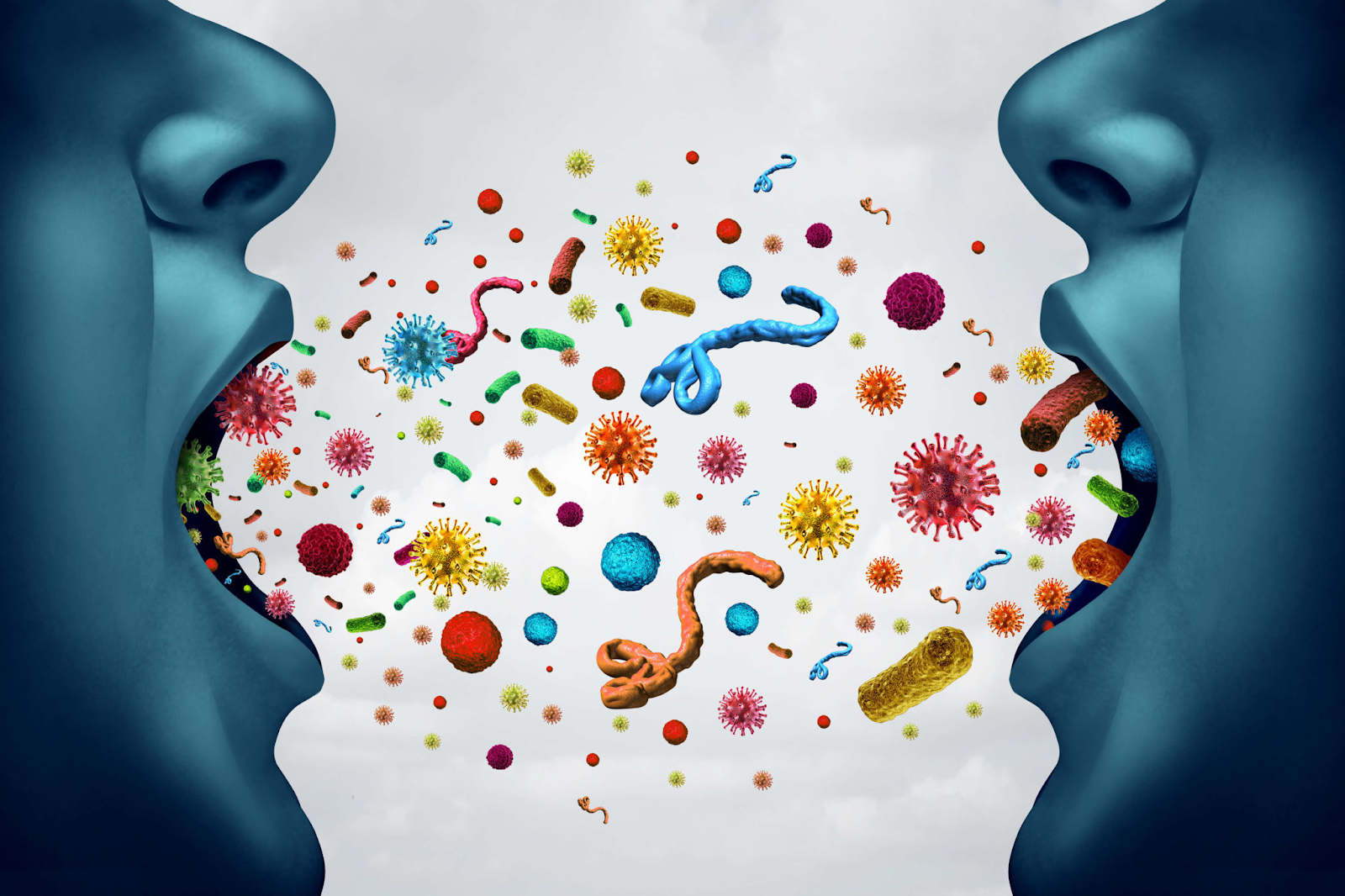
Viruses, bacteria, and other germs can exist for a surprisingly long time outside the body. The way by which germs spread is particular to each type of microbe though some may have several modes of transfer. Spread can occur:
- Through carrier organisms such as mosquitoes and ticks.
- Through the air (droplets or aerosol).
- Via direct transfer of body fluids from one person to another via saliva, sweat, mucus, blood, or any other bodily fluids.
- From direct contact with surfaces where body fluids have dried.
- Through contact with animals
- From water and soil.
- From contaminated water and food.
The cascade of symptoms that follows when you “catch a bug” has everything to do with the bug attacking different cells in your body.
- An infected person sneezes in your vicinity.
- You inhale the virus and it attaches to the cells lining your nasal sinuses. The virus attacks these cells and then rapidly replicates new viruses.
- The nasal sinus cells lyse and the virus spreads into your bloodstream and lungs. Because you have lost some of the cells lining your sinuses, fluid can flow into your nasal passages thereby giving you a runny nose.
- Virus in the fluid that drips down your throat attacks the cells lining your throat, giving you a sore throat.
- A virus in your bloodstream can attack muscle cells giving you muscle aches.
- The same thing can happen to the cells in your heart, kidneys liver and lungs, leading to organ damage.
- In order to cause disease, the pathogen (a disease-causing microbe) entering the body must reproduce in sufficient numbers before it is overwhelmed by the body’s immune response:
-
-
- Your immune system responds to infection by producing chemicals called pyrogens that cause your body temperature to increase. Because most of your body’s chemical reactions occur at a temperature of 98.6 degrees Fahrenheit (or 37 degrees Celsius), a fever actually helps you fight infection by slowing down the rate of viral replication.
- Chills are caused by rapid muscle contraction and relaxation. They are another of the body’s ways of producing heat when it feels cold.
- These types of immune responses continue until the virus is eventually eliminated from your body.
-
 If, however, you sneeze or cough, you can spread thousands of new viruses into the environment where they can go on to infect someone else!
If, however, you sneeze or cough, you can spread thousands of new viruses into the environment where they can go on to infect someone else!

